Contender Eliminated: Deconstructing the Controversy Around THOSE Wipeout Ads
Some experiences were created and intended for a market of nine-to-fivers who moonlit as night-trippers. They wanted something edgier and cooler, and Sega and Nintendo's output was anything but.
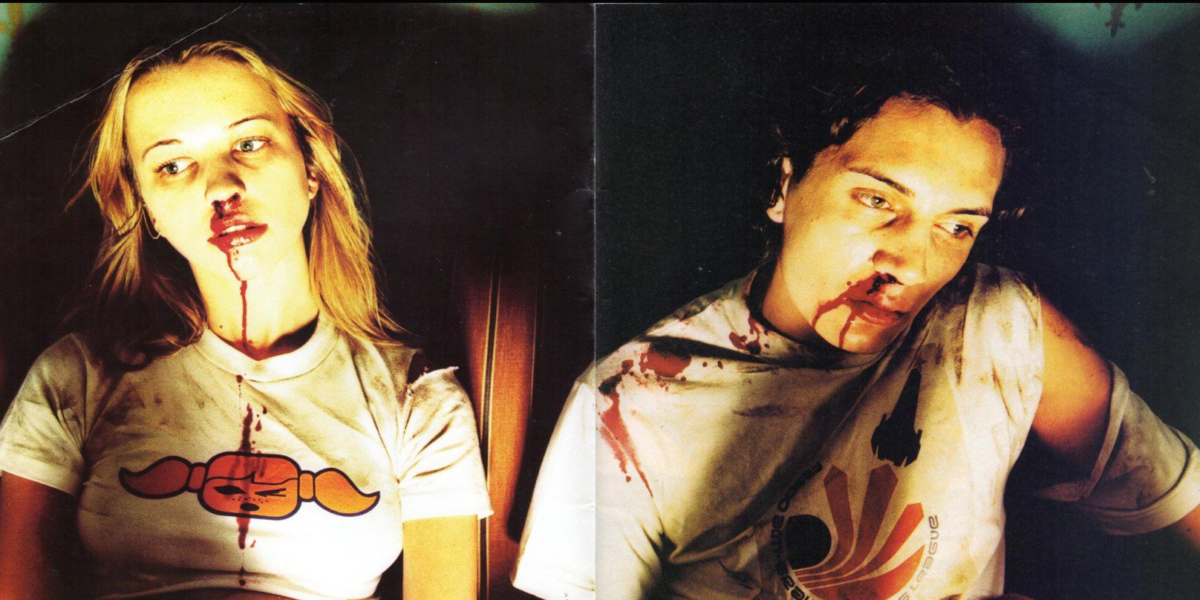
If controversy doesn't sell, it at the very least, gets people talking.
What else would get people talking more than a bloody-nosed pair looking off into the void after a heavy "gaming" experience?
The mid-90s were a hedonistic time for clubgoers.
Sensing this cultural shift, Sony eagerly embraced the opportunity to tap into a market misunderstood by most. Wanting to fuse the lively vibes of the nightlife scene with the gripping excitement of gaming, they did so, especially with one game.
Wipeout.
But, at the time, for those unfamiliar with the gaming world, these ads were just another contentious issue, seen as a way to justify an intrusion into the lives of young people, whom they often fundamentally misunderstood.
Moral panic ensued from some corners of the media.
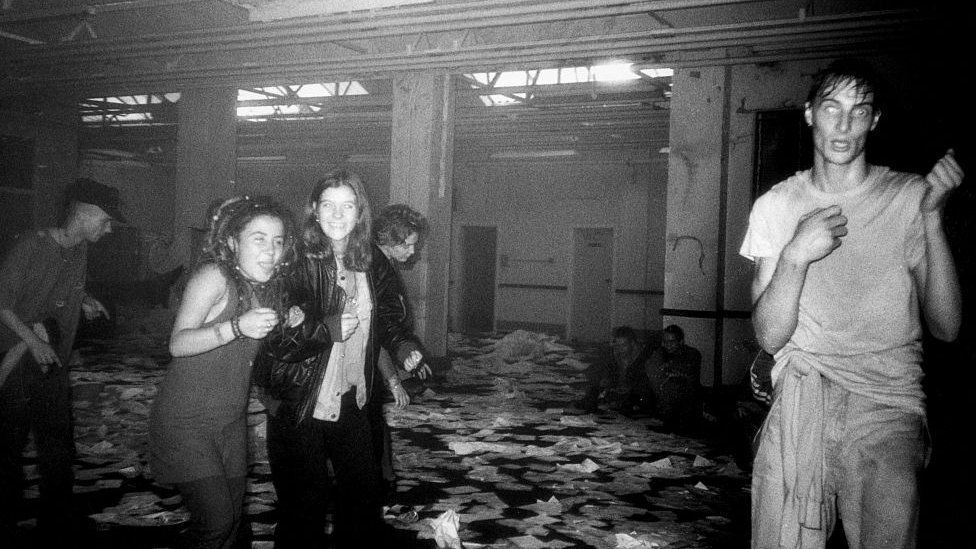
Controversy isn't new to the gaming industry, of course.
Wolfenstein 3D, Doom, and Night Trap each stirred their specific controversies, ironically contributing to increased public awareness of these games.
But those games were at least contentious with their content. The problem here was with the marketing efforts for this game, not the game itself. It's worth noting that the advertisements themselves didn't explicitly refer to drug misuse.
It was entirely interpretive for wandering minds that sought out pleasures during the small hours of the morning, hence, it was unlikely that children would ever have seen the material anyway.
Regardless, any apparent subtext was enough to send the governmental elite and middle class into a tizzy.
Some experiences were created and intended for a market of nine-to-fivers who moonlit as night-trippers. They wanted something edgier and cooler, and Sega and Nintendo's output was anything but.
It didn't help when tabloids such as The S*n suggested that these "kid's games" were being promoted with such heavily suggestive imagery.
Wipeout was the tip of the spear for a marketing approach that was more mature in its endeavours, but tabloids of course prefer to deal in absolutes. Nuance is just an obstacle to a "good story".
The PlayStation aimed to be inclusive, of course, but not all games targeted a younger audience. It made sense then that this ethos was reflected in how Sony marketed the machine, hence, a bloody-nosed Sara Cox and her chum.
Some experiences were created and intended for a market of nine-to-fivers who moonlit as night-trippers. They wanted something edgier and cooler, and Sega and Nintendo's output was anything but.
So, Sony knew this was exactly the market they wanted to tap into, and boy did they, all thanks to a then recently hired marketing manager, Geoff Glendenning.
Cheers, Geoff!
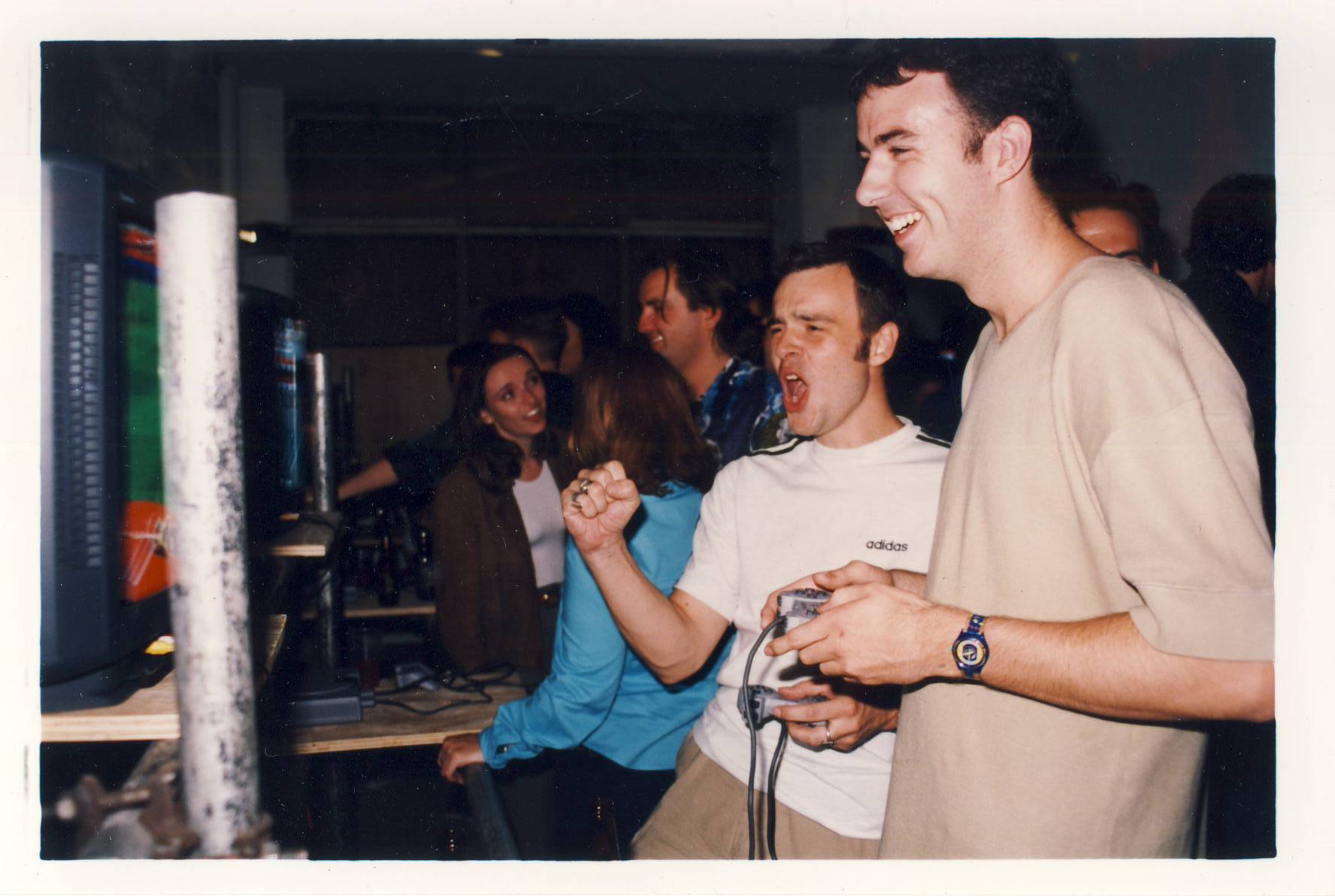
If you were a '90s kid immersed in the world of SNES or Mega Drive, there's a good chance your passion for gaming naturally transformed with age.
The inclination for new adventures and heightened challenges became apparent, especially as people were hungry to progress from straightforward 2D platformers to the more intricate realm of 3D experiences.
Not everyone, of course, but most. The pace of technology dictated that 3D was here to stay and that while 2D had its place (and still does) dimensions of the third kind were ripe for exploration.
Wipeout emerged as a quintessential representation of a new era in home consoles.
Tomb Raider urged you to wander through exotic climes as Lara Croft, Air Combat through the skies of Usea and Wipeout through Altima VII faster than your mates XRII down sketchy, headlight-illuminated 3 am backroads.
Rumours even circulated that Sony was determined to pioneer 3D experiences, to the extent that they allegedly prohibited 2D games on the platform during its early days.
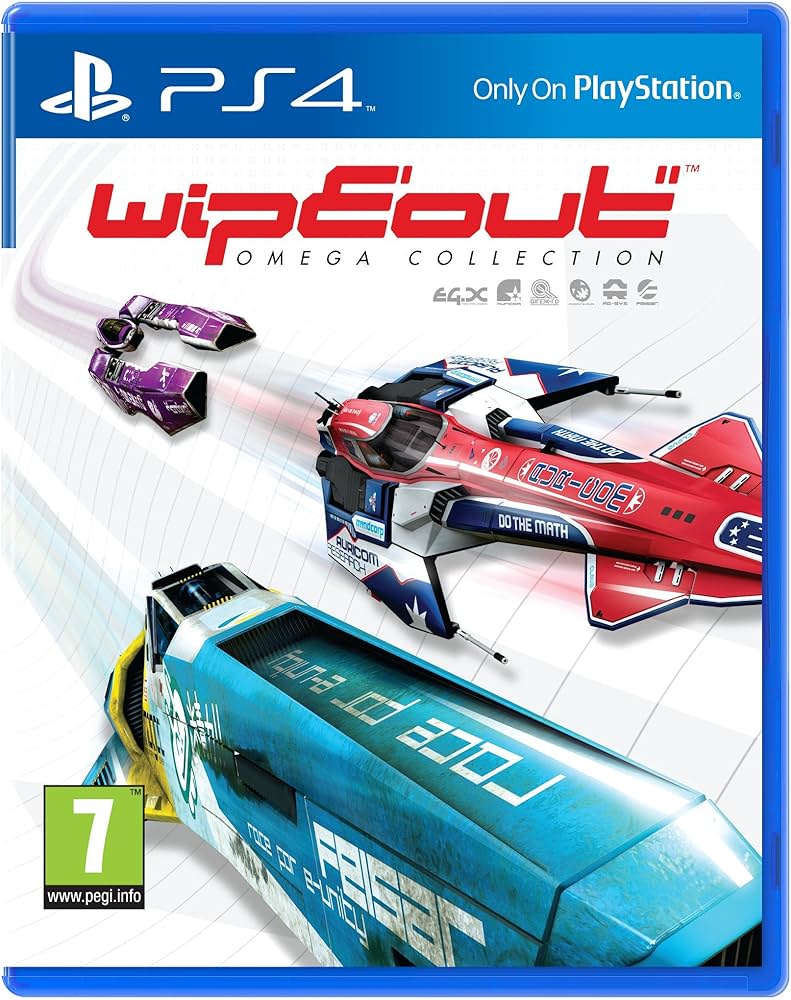
Wipeout Omega Collection
Still got a Wipeout itch that needs to be scratched? Grab a copy of Wipeout Omega Collection from Amazon. Wipeout Omega Collection is the last great Wipeout released on console. We'll get a small kickback from any purchases made.
Fortunately, this supposed policy didn't endure
Thanks to Glendenning, this distinctive focus caught people's attention and made the PlayStation, as a newcomer, the most sought-after new product in town.

Notably, Wipeout emerged as a quintessential representation of a new era in home consoles, showcasing the power and potential for immersive experiences that resonated with a maturing audience.
So Glendenning figured 90s gamers, on the whole, were maturing, and as such, probably preferred consoles made for their age rather than ones that now seemed outdated, or focused more on child-friendly entertainment.
A win-win for Sony, as this specific gaming market had disposable income burning a hole in their pockets, with mummy and daddy not gatekeeping what they should spend their money on.
So, they decided to make consoles that suited the tastes of these gamers instead of sticking to ones designed for children.
The Advertisements in Question
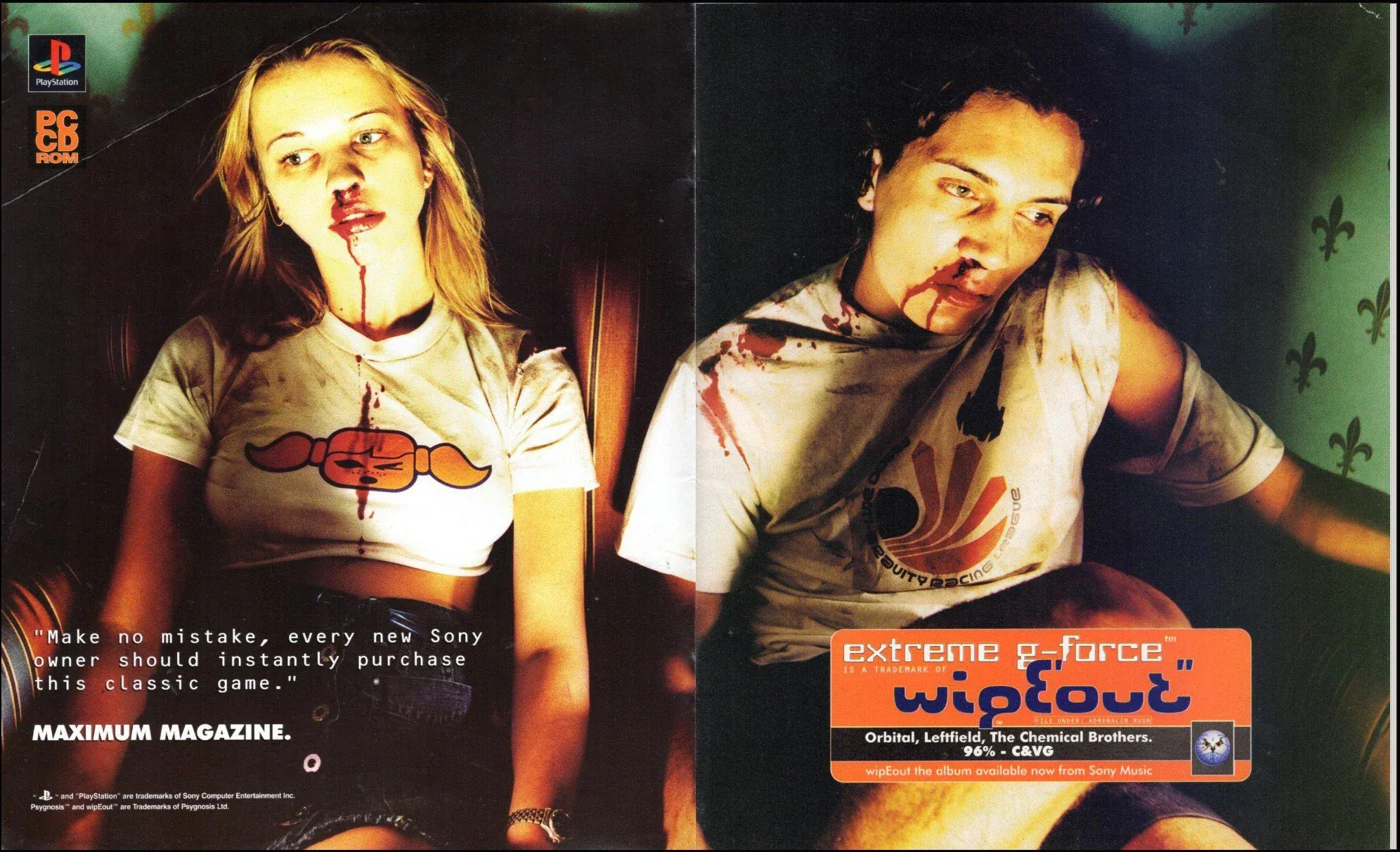
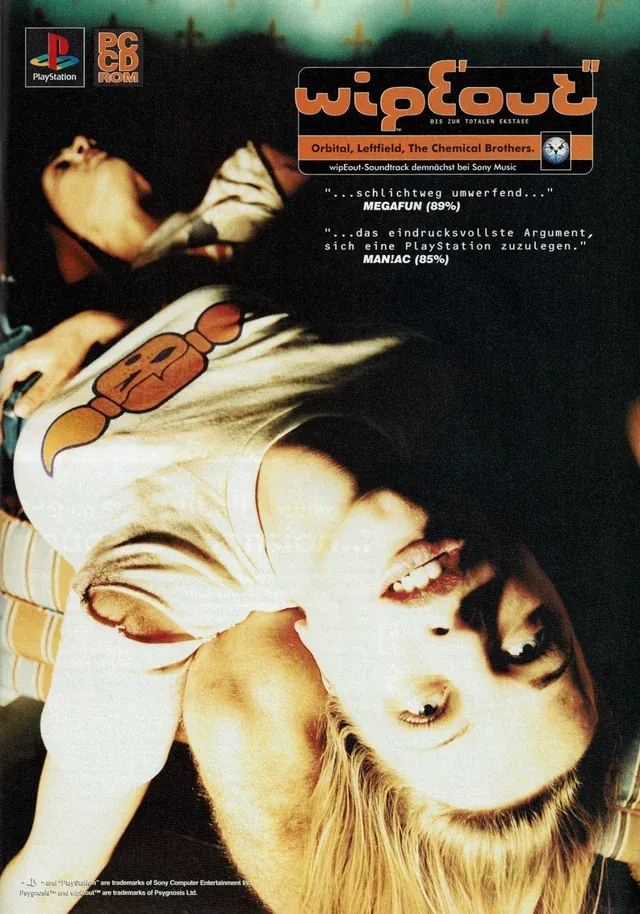
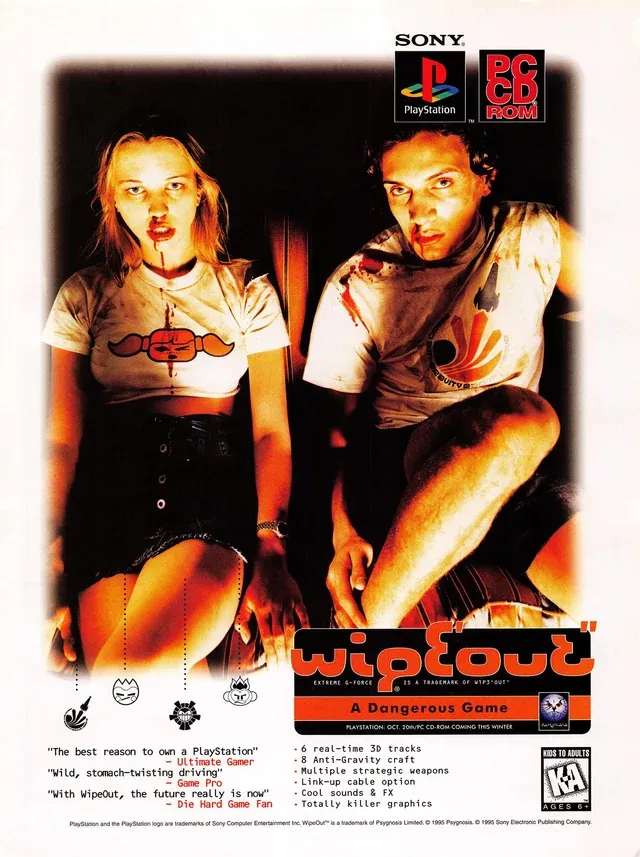
The most controversial of all showcases two young individuals slouched, blood streaming heavily from their noses onto shirts adorned with icons from, Designers Republic designs.
Firstly, how iconic were those ads?
Their glassy-eyed gaze into the distance conveyed a clear narrative. While one might interpret it as a nod to drug culture or the mind-blowing experience of the game, it was simply a powerful representation.
Marketing aims to swiftly communicate a message, and this certainly achieves that. Instantly, the content grabs our attention, holding us spellbound with its vibrant imagery and thought-provoking themes that spark further curiosity.
"Speed. However one wants to interpret that."
But the controversy remained in some circles like echos petering out over long distances. Loudest at the start, faint and unforgettable as the news cycle moved on to the newest outrage.
An article in one particular tabloid claimed, 'An ad for a Sony computer game aimed at kids as young as three has been blasted as glamorising drugs.' They stretched connections, suggesting a game with nothing objectionable somehow posed an issue because of its lack of objectionable content.
By emphasising the lowest age rating, they insinuated it was a game targeted at three-year-olds, aiming to provoke those unfamiliar with video games.

Jordan H.J. from voletic.com inquired Ian Anderson from The Designers Republic about the poster's concept, and he explained that its main idea was "Speed. However one wants to interpret that."
He continued, "The design felt like a natural move, intended to be edgy, pushing boundaries, and provoking responses from those predisposed to be offended. Despite awareness of the controversy, it didn't matter to them – those people were considered small-minded and had no impact."
The goal was achieved by elevating Wipeout's profile and positioning it as an edgy game with broad appeal.
The fact that, nearly 30 years later, we're all still digesting this stuff says so much about the work that Sony, The Designers Republic, and countless others did in the 90s.
They set the stage for gaming in years to come and inspired countless to question design and to seek out the faces behind so much iconic work. But fundamentally, they created something so uniquely special, so intrinsically linked to escapism for millions that it is hard to articulate, even after all these worlds.
The controversies around Wipeout's marketing marked a tectonic shift, not only for PlayStation but the entire gaming industry in the '90s.
It highlighted the clash between traditional perceptions and the evolving landscape of gaming, where innovation, targeting diverse audiences, and pushing boundaries became defining features of an industry in transformation.
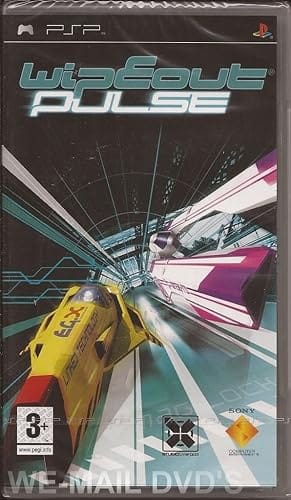
Wipeout Pulse (PSP)
Wipeout Pulse for PSP delivers a high-octane anti-gravity racing experience. Immerse yourself in futuristic tracks, explosive speed, and pulse-pounding music. Master the sleek ships and conquer adrenaline-fueled challenges.

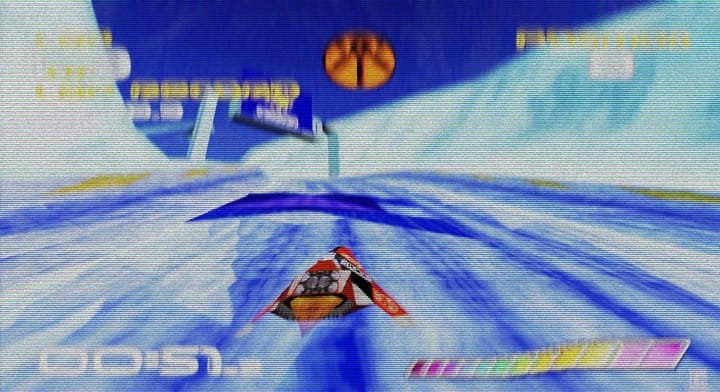
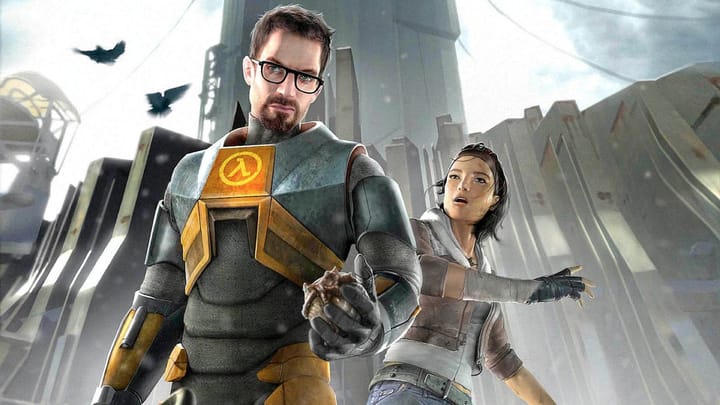
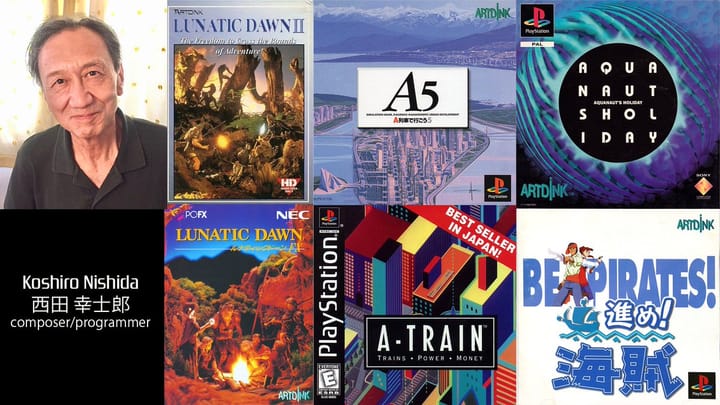
Comments ()